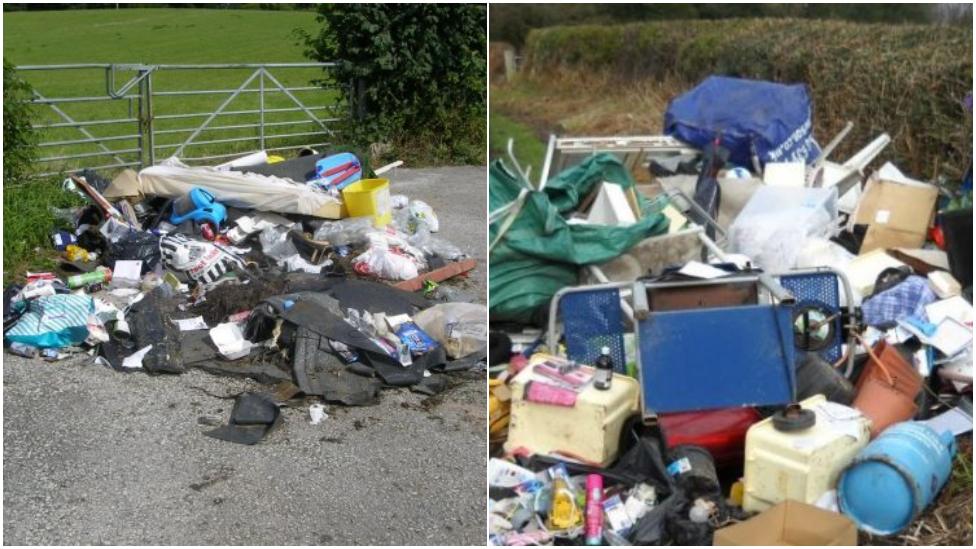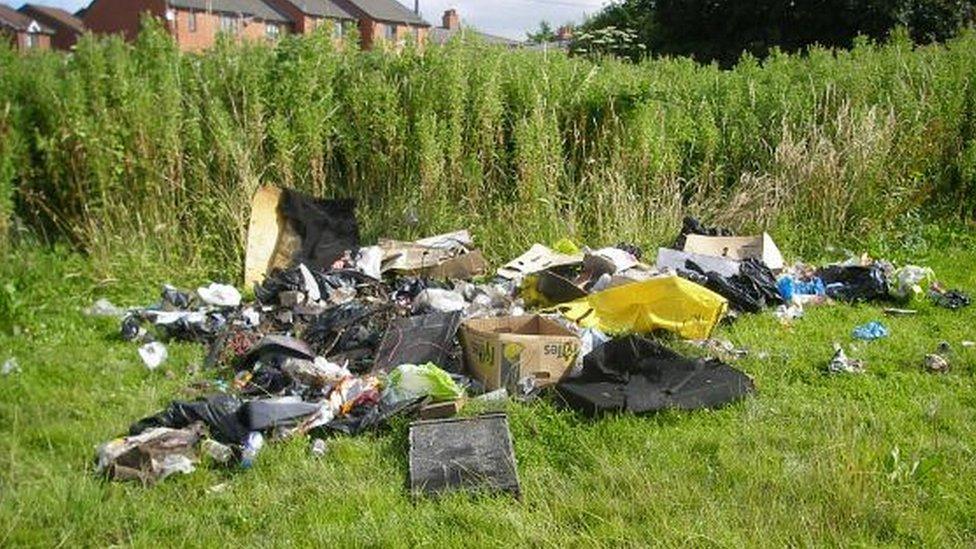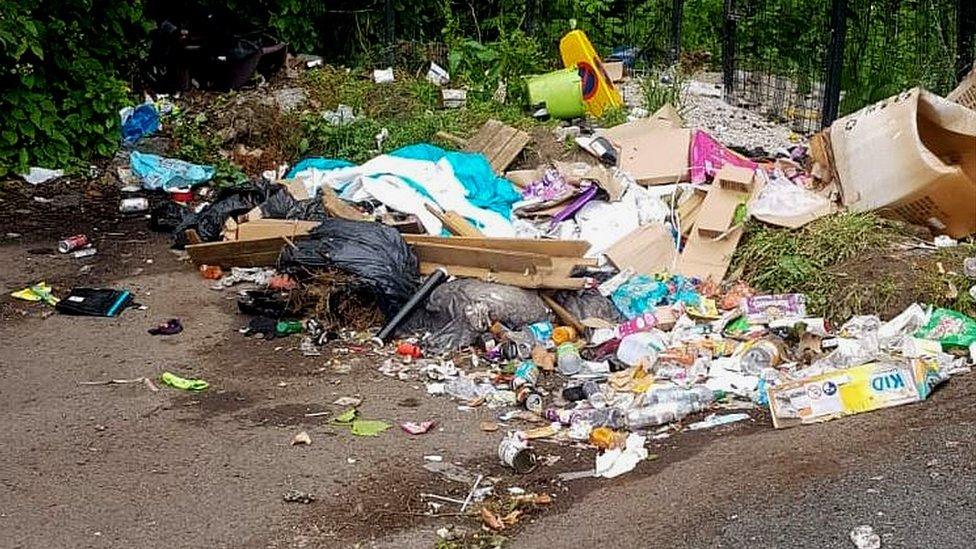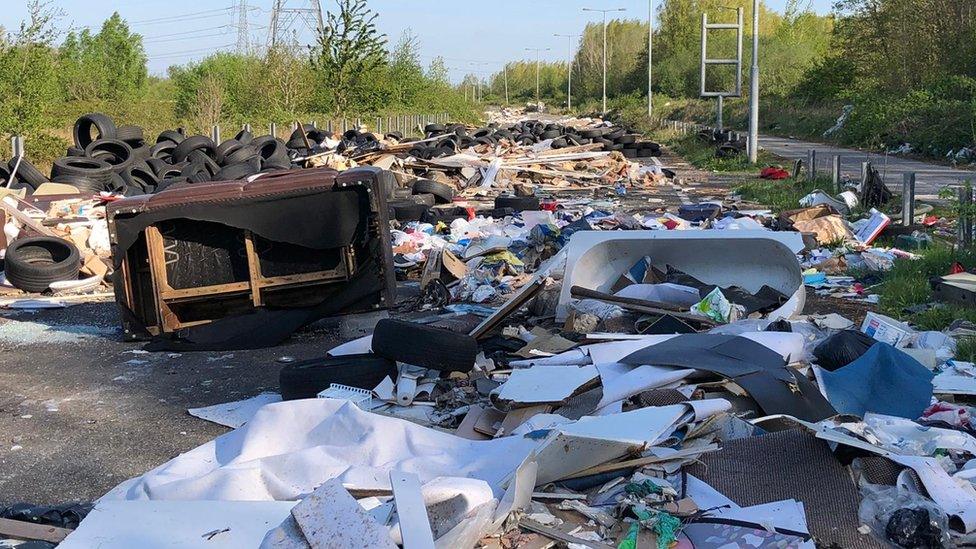Wrexham fly-tipping: Rules delay use of mobile cameras
- Published

Anyone found fly-tipping in Wrexham can expect a fine of up to £400
Mobile cameras bought to catch and fine fly-tippers have not been used despite approval being given a year ago.
Wrexham councillors agreed to take action in February 2021 following a spike in fly-tipping across the area.
But the cameras did not arrive until August due to supply issues during the pandemic.
And officials have partly blamed the continued hold-up on complying with rules surrounding the use of covert surveillance methods.
Anyone found responsible for fly-tipping in the county borough can be issued with a fine of up to £400, according to the Local Democracy Reporting Service (LDRS).
Joanne Rodgers, the council's enforcement services coordinator, said assessments on best places to place the cameras had been carried out.

A total of 24 fixed penalty notices were issued for littering and fly-tipping in Wrexham last year
"We have to bear in mind any RIPA, external [Regulation of Investigatory Powers Act] requirements if we happen to use covert cameras as well, so it's not just as easy as placing a camera and there is a quite a lot of process to consider," she said.
A total of 24 fixed penalty notices were issued for littering and fly-tipping in Wrexham last year, according to figures shared with the council's homes and environment scrutiny committee.
More than £3,000 in fines have been issued, with 19 cases awaiting a court date and 12 investigations still ongoing.
Rachel Penman, head of service strategy for the authority's environment department, said signs had been used to warn off fly-tippers in some locations, preventing the need for cameras.
"Ultimately, what we look to achieve is that we deter people from fly-tipping, rather than we catch them," she said.
- Published8 March 2022

- Published21 January 2022

- Published14 December 2021
